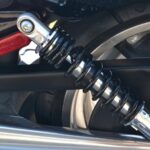
12 May Car Shaking: 6 Common Reasons & Repair Tips
 There’s nothing more unsettling than driving to work with your car shaking. It can be hard on the nerves not knowing if it is a major problem (therefore expensive) or not. There are 6 common reasons outlined below that may pinpoint if faulty brakes, loose engine mounts, or something else is causing your car shaking.
There’s nothing more unsettling than driving to work with your car shaking. It can be hard on the nerves not knowing if it is a major problem (therefore expensive) or not. There are 6 common reasons outlined below that may pinpoint if faulty brakes, loose engine mounts, or something else is causing your car shaking.
Early Warning Sign: Steering Wheel
Your steering wheel is not just a tool for controlling your vehicle; it’s also a direct connection to the road. It’s often the first place you notice a change in your car’s performance or handling. When it starts to shake, vibrate, or veer off to one side, it signals that your vehicle needs attention.
6 Common Reasons For Car Shaking
While this list does not include every possible issue that could cause your car to shake, vibrate, or wobble, but it does cover some fairly common ones.
1 – Faulty Brakes System Component
If you only feel your car shaking when using the brakes, chances are the issue is in your brake system. Feeling shaking or vibrating in the steering wheel and even the brake pedal is typical when one or more brake system components are worn, damaged, or faulty. Watch for the following symptoms:
- Pulling to the side: Indicates your brakes are wearing unevenly, have a caliper issue, or compromised brake fluid.
- Pulsing Brake Pedal: Suggests an issue with your rotors, such as irregular wear or damage to the rotor.
- Mushy Brake Pedal: Common reasons are low brake fluid or air in the brake line. Look for signs of leaking brake fluid.
- Noise + Shaking: Squealing or grinding and shaking while braking may be worn-out, glazed, or faulty brake pads
2 – Loose Engine Mounts & Transmission Mounts
When an engine mount is loose or damaged, the engine moves around under the hood, creating a shaking sensation. When starting your vehicle, faulty or loose engine mounts generate more noise and vibrations than usual.
The same can be said for transmission mounts. You will usually feel excess vibrations during shifting if the transmission mounts are loose or damaged.
3 – Misalignment
Wheel alignment is a specific measurement the factory sets and relates to your vehicle’s suspension. Driving on rough roads, through potholes, or frequently hitting the curb requires an alignment service. Misalignment often creates vibrations felt in your vehicle’s steering wheel. It can also cause uneven tire tread wear. These irregularities may cause your car to veer to the side, even when driving straight with your steering wheel centered.
4 – Unbalanced Tires
Did you know your vehicle’s tires are not quite round or perfectly balanced? Even brand-new tires contain minor defects in manufacture that require adjustments during installation. Driving conditions, weather, and everyday wear & tear can all affect each tire’s balance. An unbalanced tire may cause shaking or bouncing because it wobbles as it rotates. You may feel vibration in the steering wheel, floorboards, and even through the seats at high enough speeds. When unbalanced tires go without service, it creates uneven tread wear, reduced tire life, and unsafe driving conditions. A qualified technician should check for tire balance with each tire rotation.
5 – Uneven Tire Tread
Your vehicle’s ride comfort often depends on the quality of your tires. Uneven tread wear can create a bouncy, shaky, or unsteady driving experience. Here are a few uneven tire tread wear issues you may encounter with car shaking.
- Bald Spots or Patchy Wear: Wear patterns like this suggest unbalanced tires or an overdue tire rotation.
- Center Wear: Worn tread in the middle of the tire results from too much air pressure.
- Cupping: Scalloping on the tire tread implies problems with the suspension components.
- Edge Wear: Worn outer edges of the tire tread mean the tire has insufficient air pressure or regularly leaks air.
- Toe Wear or Camber Wear: Excessive wear on the inner or outer edge of the tire indicates misalignment.
6 – Worn Suspension Components
Suspension components wear out and require regular maintenance. When your vehicle’s suspension needs service, vehicle stability and steering suffer. The signs may include vehicle vibrations, body roll (side to side or front to back), and clunking noises when accelerating, turning, or stopping. Things to look for:
- Loose or faulty shock mounts, bushings, ball joints, tie-rod ends
- Damaged springs
- Worn or leaking shocks & struts
- Broken mounting hardware
Repair Tips
Modern vehicles require specialized equipment to quickly and accurately diagnose complex issues like car shaking. In most cases, if the problem cannot be identified visually (like worn tire tread or air pressure), you will need a trained automotive service technician. If you have a tricked-out garage with the tools and experience to work on your car, the above information will help point you in the right direction to diagnose why your car is shaking. However, for most of us, when dealing with vehicle safety concerns, the best advice is to schedule a diagnostic service.
Auto Repair Services in Plymouth Meeting, PA
If you want quality auto repair services in Plymouth Meeting, Visit Plymouth Auto and Tire Center. Our skilled and caring team of mechanics can help. Trust in our 50+ years of combined experience from all of our ASE-certified techs who undergo specialized training and a 1-year apprenticeship program. We ensure all work is done quickly, efficiently, and with guaranteed same-day, white-glove service.
Schedule An Appt for Car Shaking
Call us at (610) 825-6558 or visit our website and schedule your diagnostic service to discover if your car shaking is from faulty brakes, loose engine mounts, or something else.

